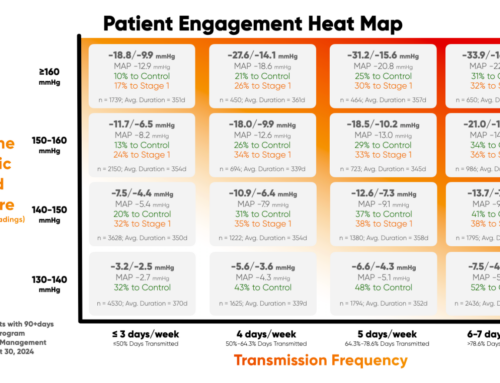The COVID-19 pandemic caused patients and providers alike to reexamine the type and the quality of healthcare services that can be administered at home. In this changing healthcare landscape, the use of Remote Patient Monitoring (RPM) has skyrocketed in popularity. Now with new Remote Therapeutic Monitoring (RTM) Current Procedural Terminology (CPT) codes set to be released in 2022, the Centers for Medicare & Medicaid Services (CMS) has continued to expand opportunities for virtual care reimbursement. Let’s examine the differences between RPM vs RTM, their key differences, and how each can be a solution for your unique patient population’s needs.
The Functional Differences
Many questions come to mind when considering the implementation of Remote Patient Monitoring or Remote Therapeutic Monitoring. Should I choose one over the other? What is the difference between RPM vs RTM? Which solution will work best for my patient population?
To simplify it, Remote Patient Monitoring (RPM) is a method of monitoring patients remotely by transmitting data from the patient’s healthcare devices back to the clinician. This can be done in real-time or at periodic intervals, depending on what is most appropriate for the particular patient and condition.
Remote Therapeutic Monitoring (RTM) also allows clinicians to monitor their patients remotely, but with RTM, providers are able to focus on patient “therapy adherence” and “therapy response” specific to the musculoskeletal system status and respiratory system status, where “non-physiologic data” is more appropriate to review.
The differences between RPM vs RTM go beyond just monitoring – one monitors while the other provides clinical, therapeutic interventions. Each code set has its own clinical applications, so it’s important for healthcare providers to understand which will work best for their patient population.
RPM vs RTM: Differences in CMS Codes
Remote Therapeutic Monitoring Codes are dedicated to digital care tools used to accurately measure non-physiological metrics that are critical to improving patient outcomes. Essentially, any information that a medical device — including software that fits the definition of a medical device — can collect that is not physiological can be collected and billed for under RTM. For example, two of the most emphasized patient classes of physiological data are pain levels and medication adherence.
In comparing RTM vs RPM codes, the RTM codes will potentially apply to broader use cases, and aimed at health conditions including, but not limited to, musculoskeletal system status, respiratory system status, therapy adherence, and therapy response, and as such, allow non-physiologic data to be collected. And, RTM data can be self-reported, entered manually into a device, and digitally uploaded by the patients themselves.
Unlike RPM codes, which are evaluation/management codes billed by physicians or qualified healthcare providers, RTM codes are general medicine codes and the major utilizers of RTM codes are expected to be physical therapists, clinical psychologists, speech-language pathologists, and occupational therapists. However, in the CMS examples given, the scope of RTM is limited to musculoskeletal and respiratory systems only.
Ready to Learn More?
In order to make the most informed decision about which CPT Codes are right for your patient population, it’s important to understand the difference between RPM and RTM. In this blog post, we discussed the high-level overview of these differences.
To learn more, please join us for a lively and informative webinar led by Wesley Smith, Ph.D., our Co-Founder and Chief Scientific Officer. He will be providing an overview of the new RTM codes, why they’re important, what they cover, and a deep dive into everything RPM vs. RTM.
Register for the Clinical Applications for Remote Therapeutic Monitoring Webinar.






